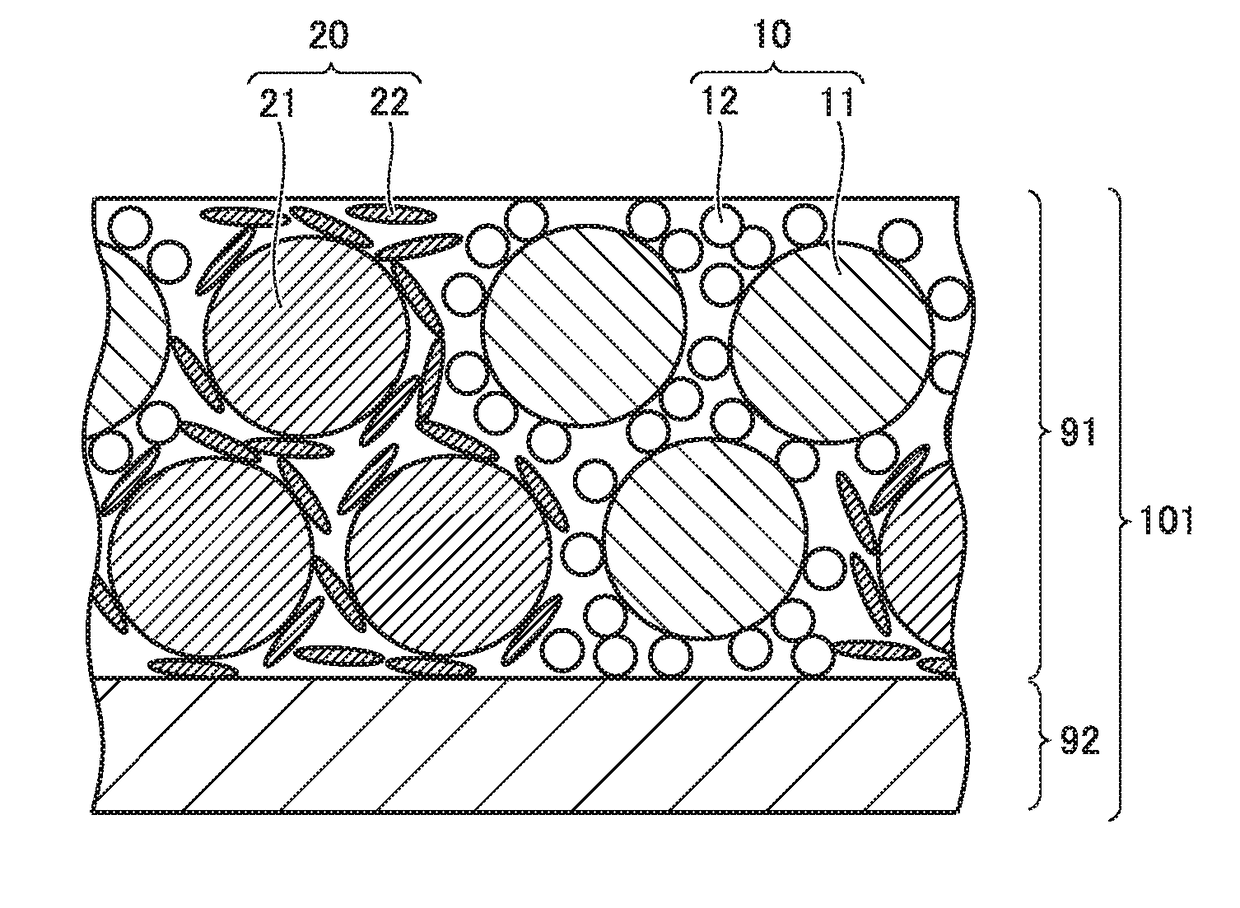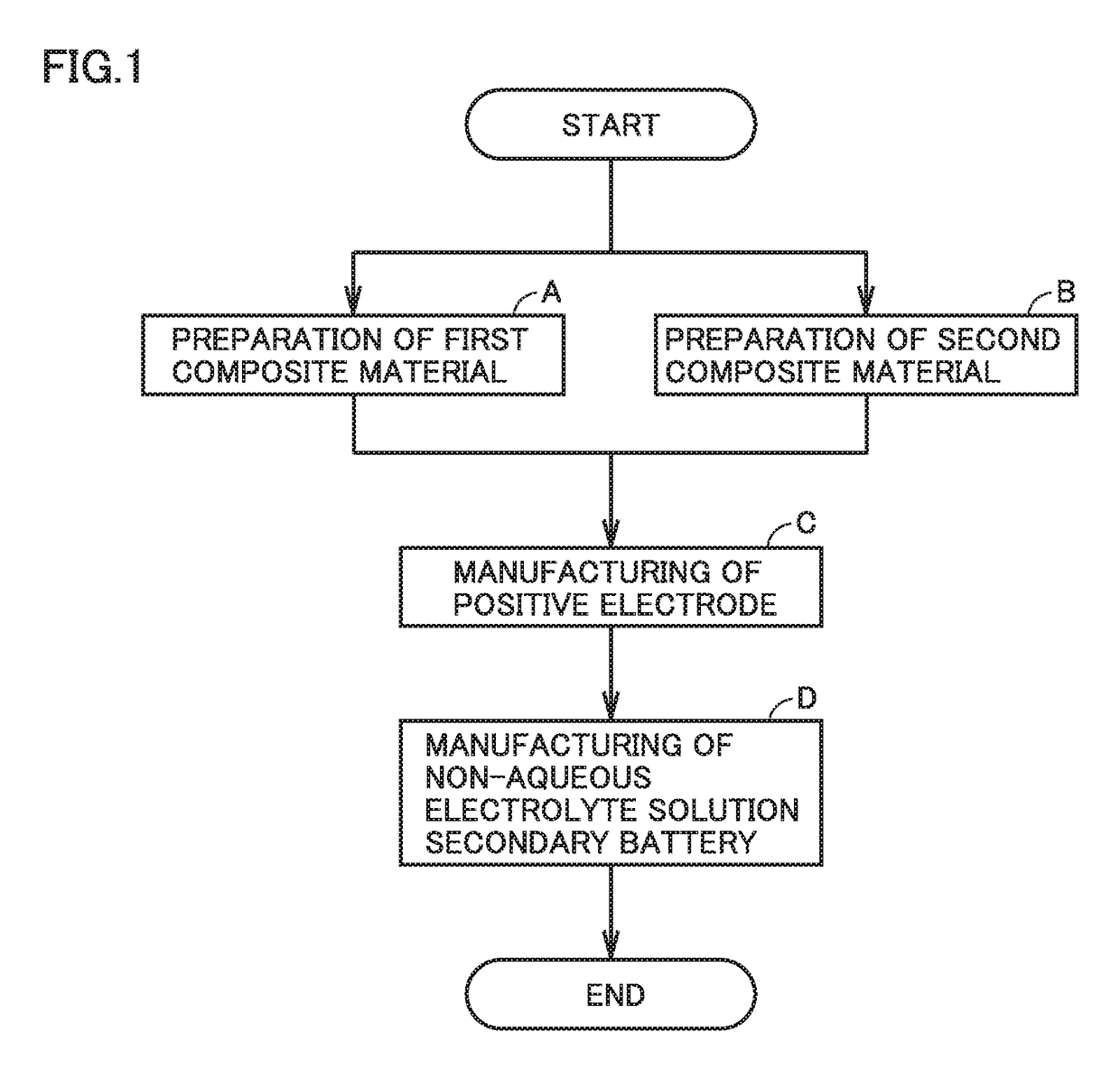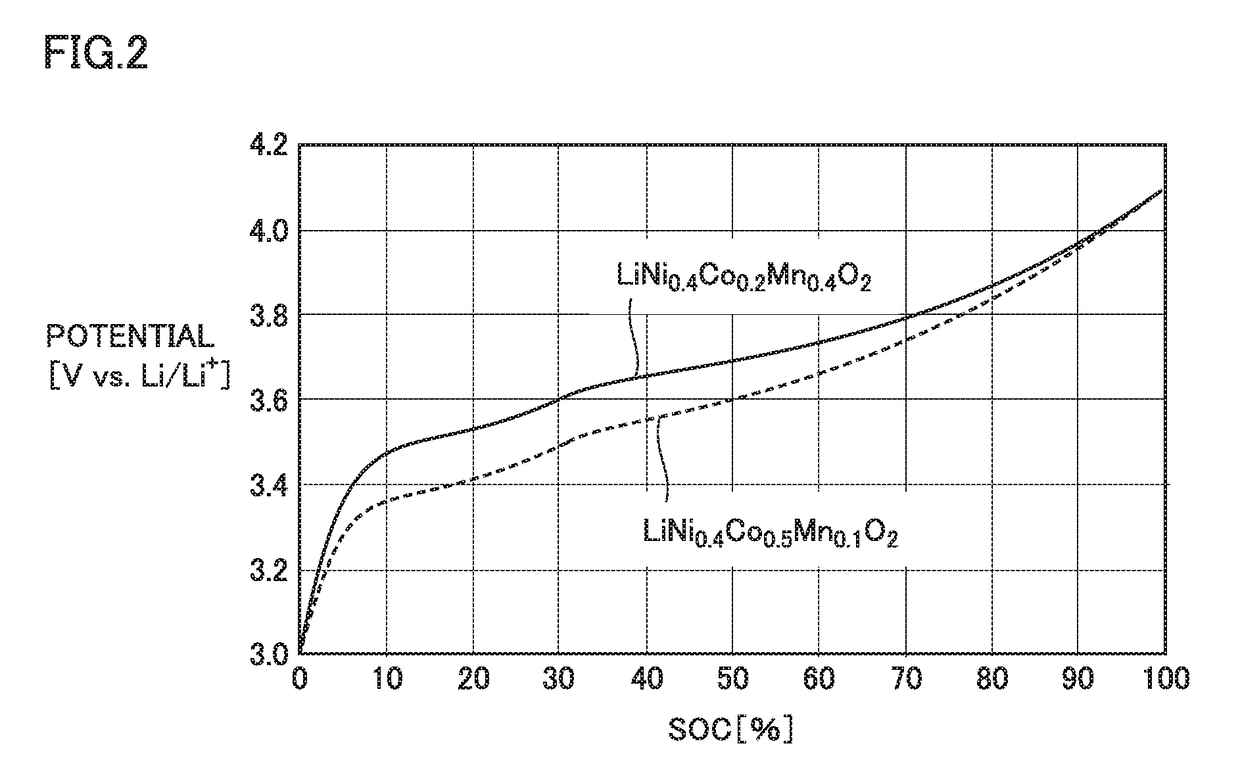Method of manufacturing non-aqueous electrolyte solution secondary battery and non-aqueous electrolyte solution secondary battery
a technology of non-aqueous electrolyte and secondary batteries, which is applied in the direction of sustainable manufacturing/processing, nickel compounds, cell components, etc., can solve the problems of increasing the cycle deterioration of the positive electrode active material having the relatively low average discharge potential, and large decrease in output at the low soc after the charging/discharging cycle. , the effect of reducing the capacity maintenance ratio after the charging/discharging cycl
- Summary
- Abstract
- Description
- Claims
- Application Information
AI Technical Summary
Benefits of technology
Problems solved by technology
Method used
Image
Examples
example 1
[0127](A) Preparation of First Composite Material
[0128]The following materials were prepared.
[0129]First positive electrode active material: LiNi0.4Co0.5Mn0.1O2 (average particle size of 10 μm)
[0130]First conductive material: AB (unit oil absorption number of 256 ml / 100 g)
[0131]First binder: PVdF
[0132]Solvent: NMP
[0133]The first positive electrode active material, the first conductive material, the first binder, and the solvent were mixed. Accordingly, a first composite material was prepared. There was 4 parts by mass of the first conductive material with respect to 100 parts by mass of the first positive electrode active material. There was 17 parts by mass of the solvent with respect to 100 parts by mass of the first positive electrode active material. 42 parts by mass of the solvent was added to the mixture with respect to 100 parts by mass of the first positive electrode active material. The mixture was agitated, thereby dispersing the first composite material in the solvent. Ac...
examples 3 , 4
Examples 3, 4 and Comparative Examples 5 to 9
[0155]In each of Examples 3, 4 and Comparative Examples 5 to 9, AB (unit oil absorption number of 256 ml / 100 g) was used as each of the first conductive material and the second conductive material. Non-aqueous electrolyte solution secondary batteries were manufactured in the same procedure as that in Example 1 except that the respective blending amounts of the first conductive materials in the first composite materials and the respective blending amounts of the second conductive materials in the second composite materials were changed to attain first oil absorption numbers and second oil absorption numbers shown in Table 1.
examples 5 , 6
Examples 5, 6 and Comparative Examples 10 to 12
[0156]As the first conductive material, graphene (unit oil absorption number of 101 ml / 100 g) was prepared. Non-aqueous electrolyte solution secondary batteries were manufactured in the same procedure as that in Example 3 except that the respective blending amounts of the first conductive materials in the first composite materials were changed to attain first oil absorption numbers shown in Table 1 below.
PUM
| Property | Measurement | Unit |
|---|---|---|
| particle size | aaaaa | aaaaa |
| particle size | aaaaa | aaaaa |
| conductive | aaaaa | aaaaa |
Abstract
Description
Claims
Application Information
 Login to View More
Login to View More - R&D
- Intellectual Property
- Life Sciences
- Materials
- Tech Scout
- Unparalleled Data Quality
- Higher Quality Content
- 60% Fewer Hallucinations
Browse by: Latest US Patents, China's latest patents, Technical Efficacy Thesaurus, Application Domain, Technology Topic, Popular Technical Reports.
© 2025 PatSnap. All rights reserved.Legal|Privacy policy|Modern Slavery Act Transparency Statement|Sitemap|About US| Contact US: help@patsnap.com



